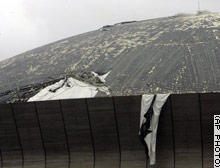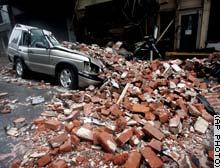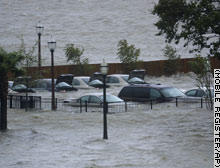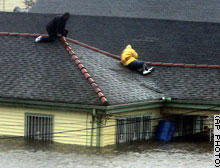The Nightmare is Over for The Big Easy
Katrina is nearly gone. As of 5 PM ET, Katrina was a Category 1 storm with max speeds of 75 mph and is 30 miles west of Laurel, Mississippi. Officials warned that people should stay out of New Orleans and the surrounding areas for at least a week to avoid "a wilderness" without power or drinking water that will be infested with poisonous snakes and fire ants. After topping the levees in New Orleans, Katrina brout a 20-foot storm surge in most places, and in some places having a storm surge of 28 feet. New Orleans was lucky though, right before the storm made landfall at 6:11 AM local time, it made a sharp turn to the right, and instead of making a direct hit on New Orleans, it made landfall in Biloxi, Mississippi where the waters are 12 feet high now and the roads have become rivers. In Mobile, Alabama, the storm pushed Mobile Bay into downtown, submerging large parts of the city. An oil drilling platform broke from it's moorings and became lodged in a bridge that carries Highway 98 over the Mobile River. People who took shelter in the Superdome were able to weather most of the storm. Then, people began to hear sounds described as hearing a New York City subway train, and then, the roof broke open, dumping water onto the astroturf below and letting the howling winds in. Early estimates put the damage as $25 billion, which could make Katrina the most costly storm in U.S. history. Below are some pictures of the damage Katrina has done, including damage to the Superdome.









0 Comments:
Post a Comment
<< Home